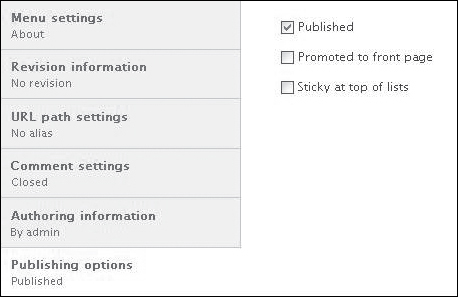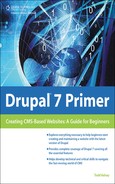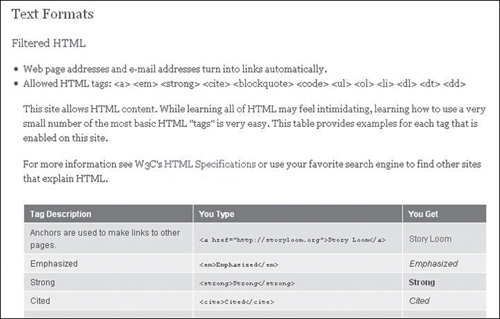Adding Content: Page
There are a couple different ways to add content. One is that until you add your first bit of content, the “Add new content” link will appear on the front page of your site (see Figure 11.1).
You can also go to the Content menu at the top of the screen and click the “Add content” link on the resulting page. Either way, you will be given a choice of various types of content you can add. We’ll start with the page.
To add a page, click the “Basic page” link:
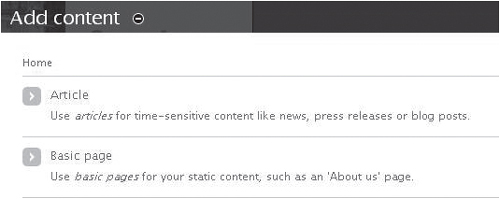
Enter a title and some sample text in the Body area:
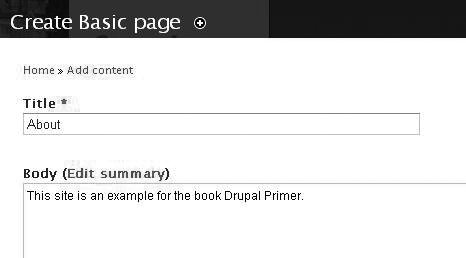
When you scroll down on the page, there will be a series of options; in some cases, you don’t need to change any of them, but it is helpful to understand their role.
Inputting/Formatting Text
When you’re inputting and formatting text, the basic mode of the current version of Drupal does not include formatting through buttons. In the next chapter, we’ll look at a series of modules you can add to enable text formatting and image upload; these are the kinds of options you typically have in webmail or blog interfaces.
Understanding Text Format
The Text format area changes the way that you can enter text in the Body field farther up in the page:

Here is a general description of the various formats (see Figure 11.2). Filtered HTML is the easy format. You can just type in text and links. (To view this information, click the “More information about text formats” link shown in the preceding graphic.)
Full HTML is used generally when you want to insert code of any kind:

Plain text is another option for simple text input:

So I’d suggest using Filtered HTML:
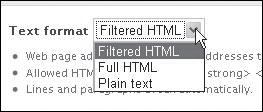
It doesn’t mean you need to learn HTML, although it might be a good opportunity to get your feet wet. To learn more about HTML, visit www.w3schools.com/html/. The next section on the screen includes additional settings, starting with menu settings (see Figure 11.3).
Figure 11.3. Here are some additional settings that you can adjust when you create new content.
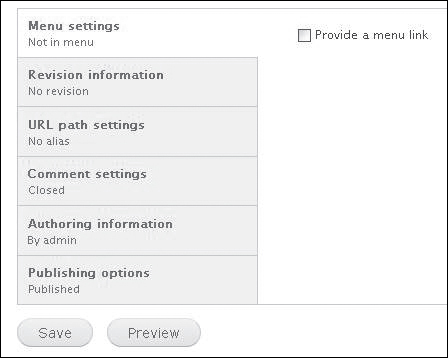
Menu Settings
The Menu settings area provides an easy way to make a link for a page as you’re creating it; click the Menu settings tab:

Then click the “Provide a menu link” checkbox. A new section will open up. What this is doing is indicating a menu option that will be created so that people can get to your page. The Parent item option is pointing to the Main menu, which is simply the main menu of tabs that appears at the top of the Drupal site (for example, currently you probably have a Home tab).
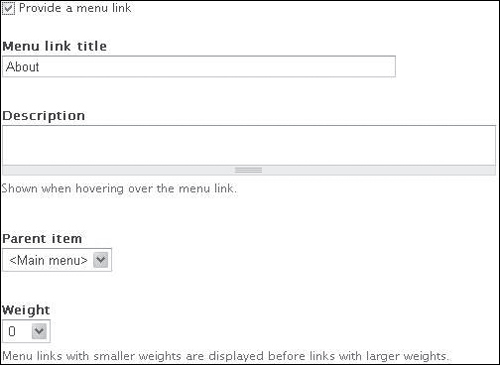
![]()
Now the menu link appears as a tab at the top of the site, leading to the page:
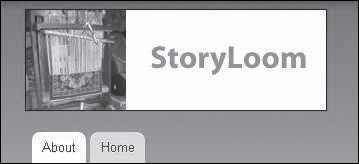
Revision Information
When you’re creating new content, the Revision information section creates a separate version of the content, which you can “revert” back to. If you go to this section, and click “Create new revision,” you can leave a message. This feature is used to help facilitate editorial workflow, so that you can go back to previous versions of content.

URL Path Settings
The URL path settings give you a bit more control over how the address to a page appears. I’d recommend enabling Clean URLs, as per the previous chapter. But if that feature doesn’t work for some reason, or if you want to make a shorter or more custom link, you can input text here.
Try it!

Comment Settings
You can control Comment settings on a per article/page basis. See the “Review Permissions” section in Chapter 7 for more information on permissions and users.

Authoring Information
If you like, you can change the name that appears for the author of content; you can also put a date here, if you want something other than the automatic date.

Publishing Options
The Publishing options control whether content appears at all or not (see Figure 11.4). If you are working on a draft, you could uncheck “Published.” The “Promoted to front page” option lists the content on the front page (helpful for articles). The “Sticky at top of list” option helps an individual piece of content be at the top of a given list—for example, if you’ve added several articles and want one to be emphasized.
Figure 11.4. Adjust Publishing options—good to be aware of.
